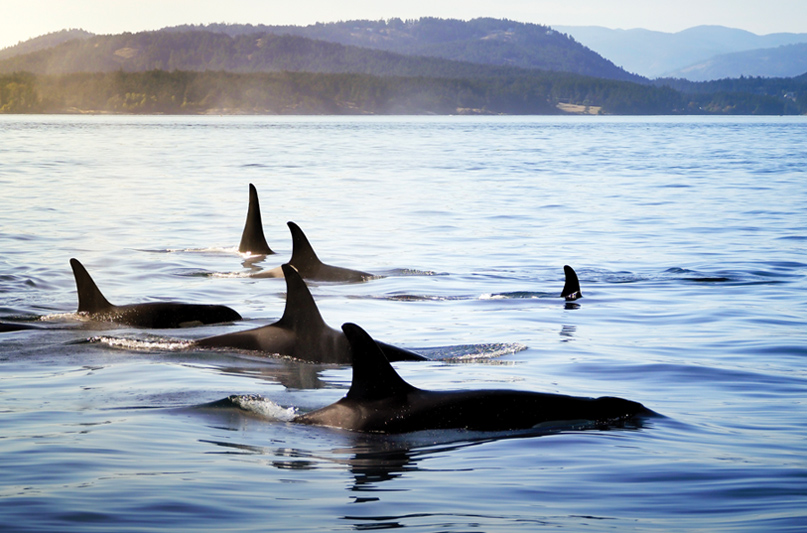
The Washington Department of Fish and Wildlife (WDFW) has implemented a voluntary no-go zone (no boating area) on the western edge of San Juan Island to protect the diminishing southern resident killer whale populations. The no-go zone will extend from Mitchell Bay in the north to Cattle Point in the south, and extending a quarter-mile offshore for the entire length. In the area around Lime Kiln Lighthouse the area extends half a mile offshore.
Even though under federal protection, the southern resident killer whale population has declined from 98 whales in 1995 to just 76 in 2017. Human interaction in the form of boat collisions, noise, toxic contaminants, plus a decline of prey are considered the most likely culprits for the reduction. This no-go zone is supposed to alleviate the stress caused by human contact, and hopefully boost total killer whale population.
The WDFW will be working with other agencies and stakeholder groups to manage and educate boaters on the no-go zone. The zone applies to both recreational and commercial vessels. The off-limits area covers the most popular foraging spots for killer whales, giving them a quiet place to eat and socialize.
The governor signed an executive order in March of this year creating a task force that will mobilize the WDFW and other agencies to preserve killer whale populations. This year’s salmon fisheries reflect this effort, with reduced catches in the San Juans, the Strait of Juan De Fuca, and Admiralty Inlet, all killer whale feeding areas. The National Atmospheric and Oceanic Administration (NOAA) has also asked Washington State officials to act on behalf of killer whales. Ron Warren, head of the WDFW’s fish program, said, “This step will help support killer whale recovery and prevents a potential delay in federal approval for our salmon fisheries throughout the entire Sound.”
The WDFW acknowledges that this additional loss of territory is tough in a year that already has reduced fishing opportunities. To make up for this, Warren noted that other areas of Puget Sound will have more opportunities to catch coho salmon than in previous years. Certain commercial vessels targeting Fraser River sockeye will be given an exception to fish the northern part of the zone, because of the limited commercial openings this year. The WFDW is working with NOAA to increase the total number of salmon released, providing more food for the killer whales.
“Our efforts to recover killer whales will ultimately mean more salmon returning to Puget Sound each year, which will benefit anglers as well as orcas,” Warren said. A map of this area can be found at wdfw.wa.gov/conservation/orca/.